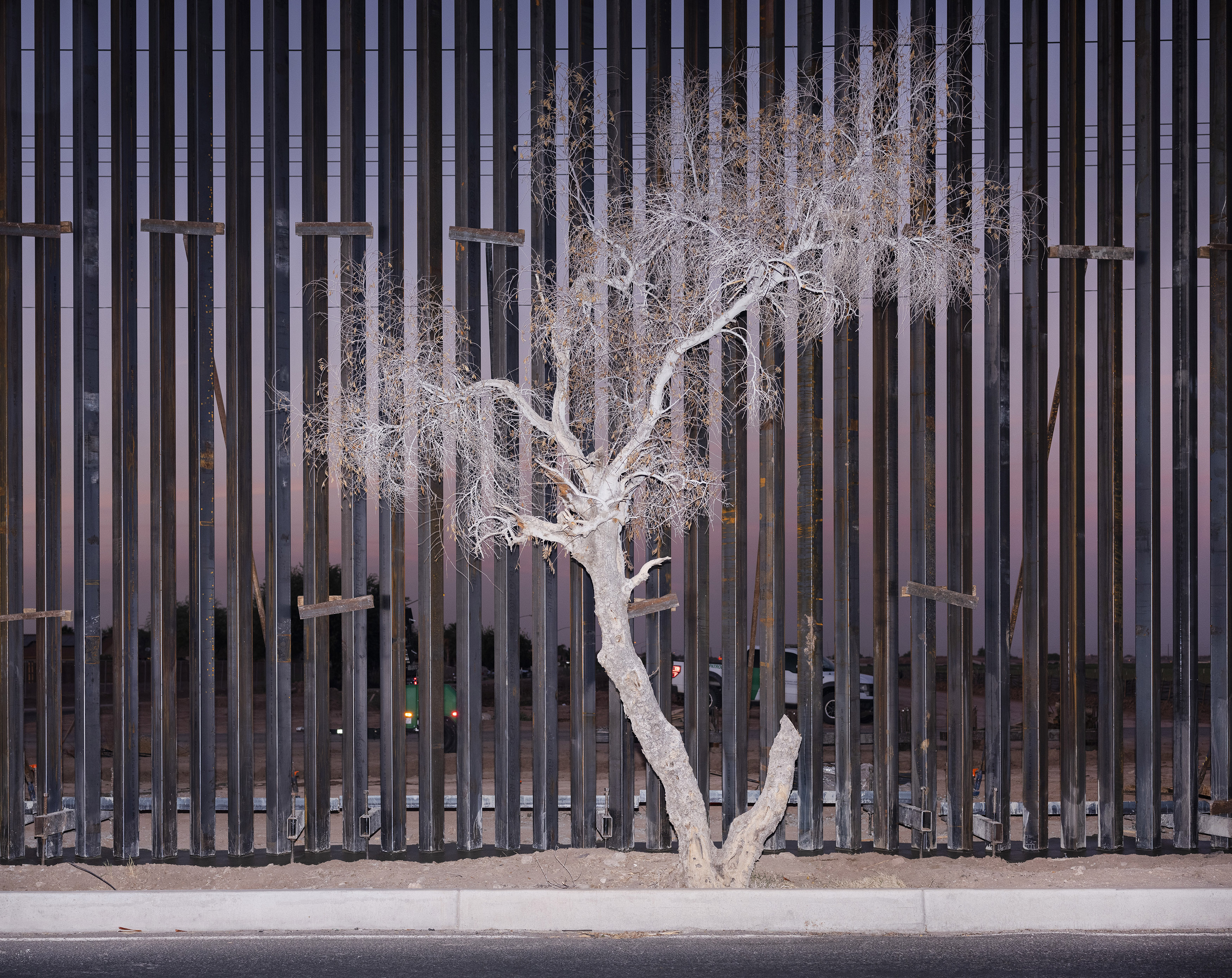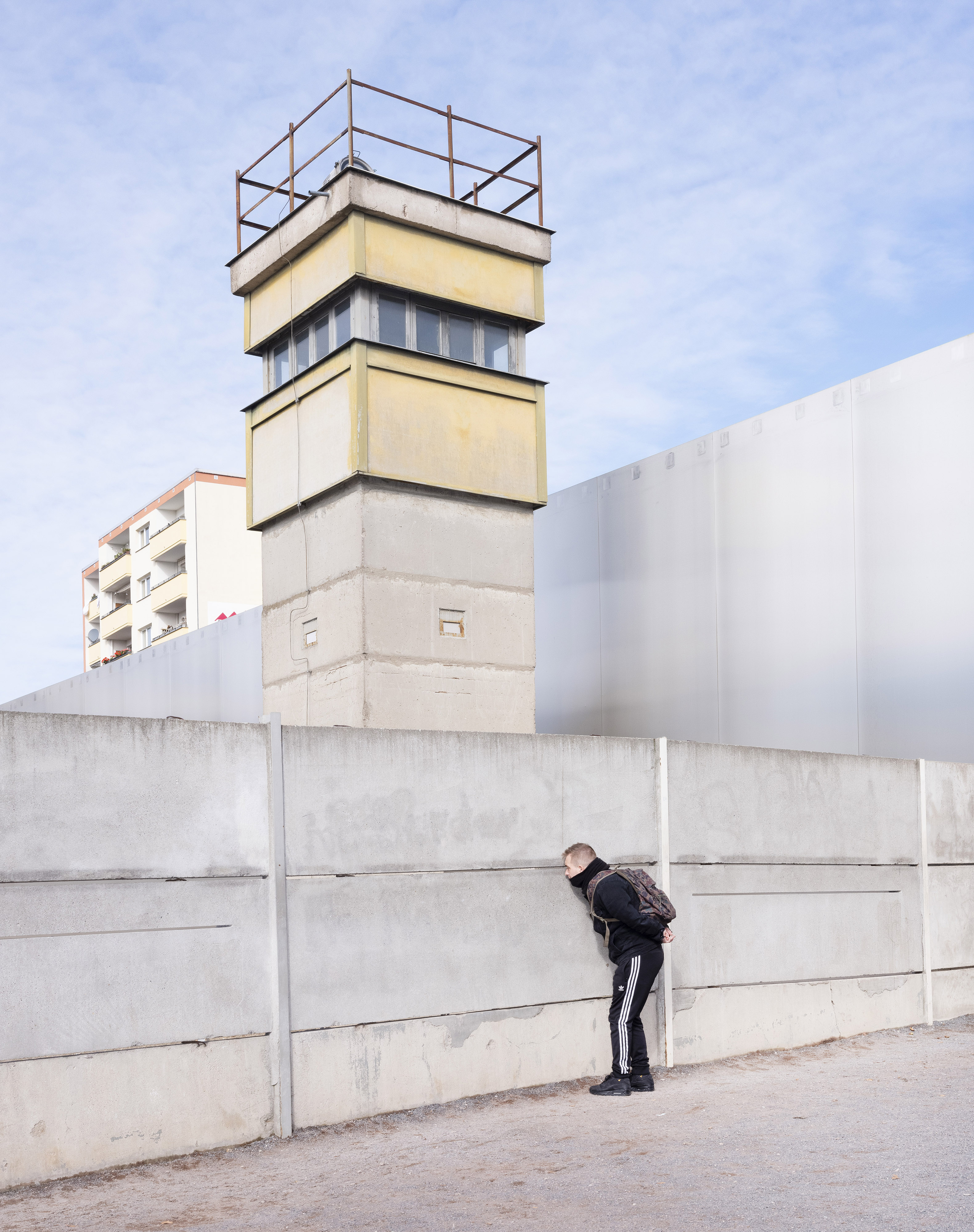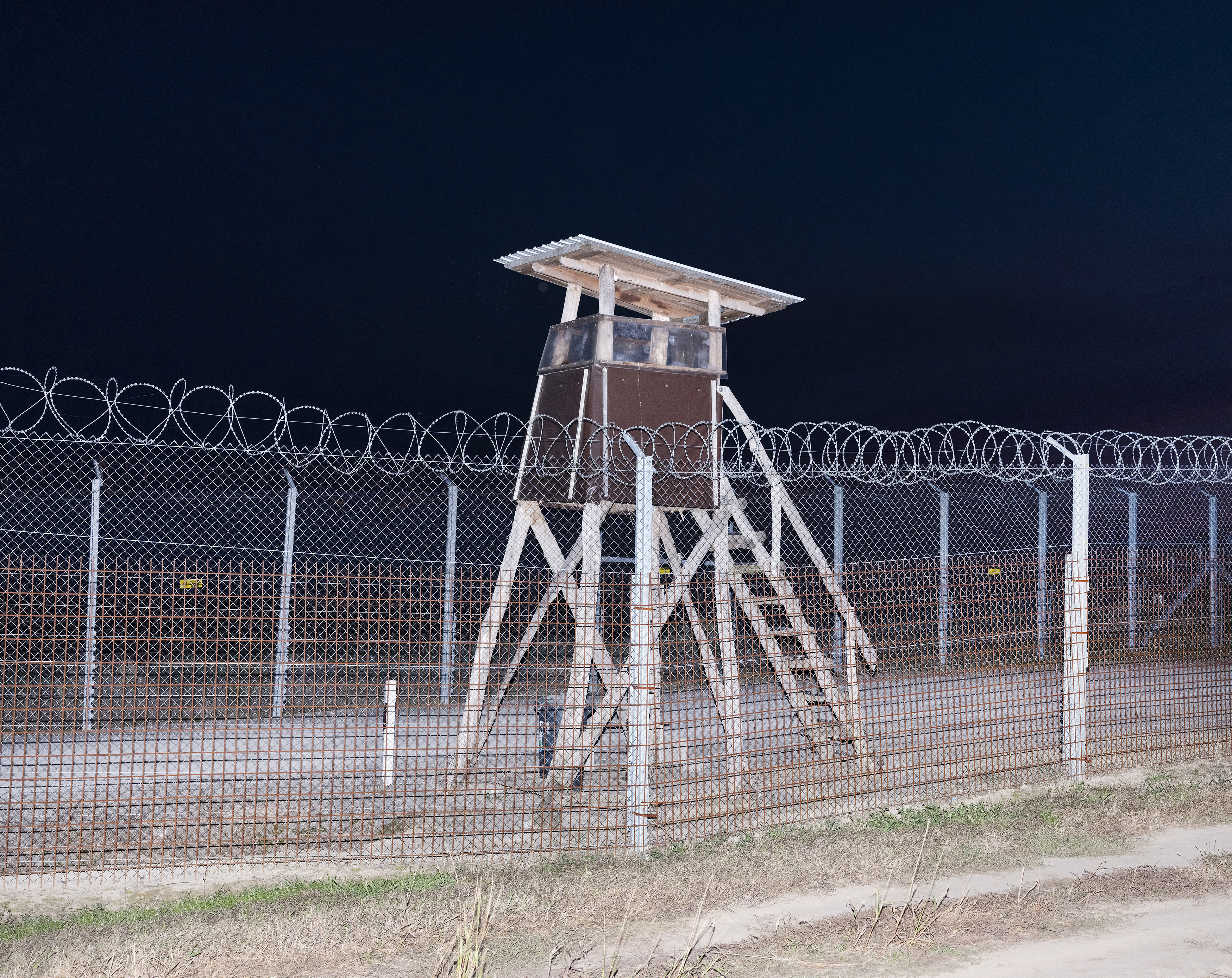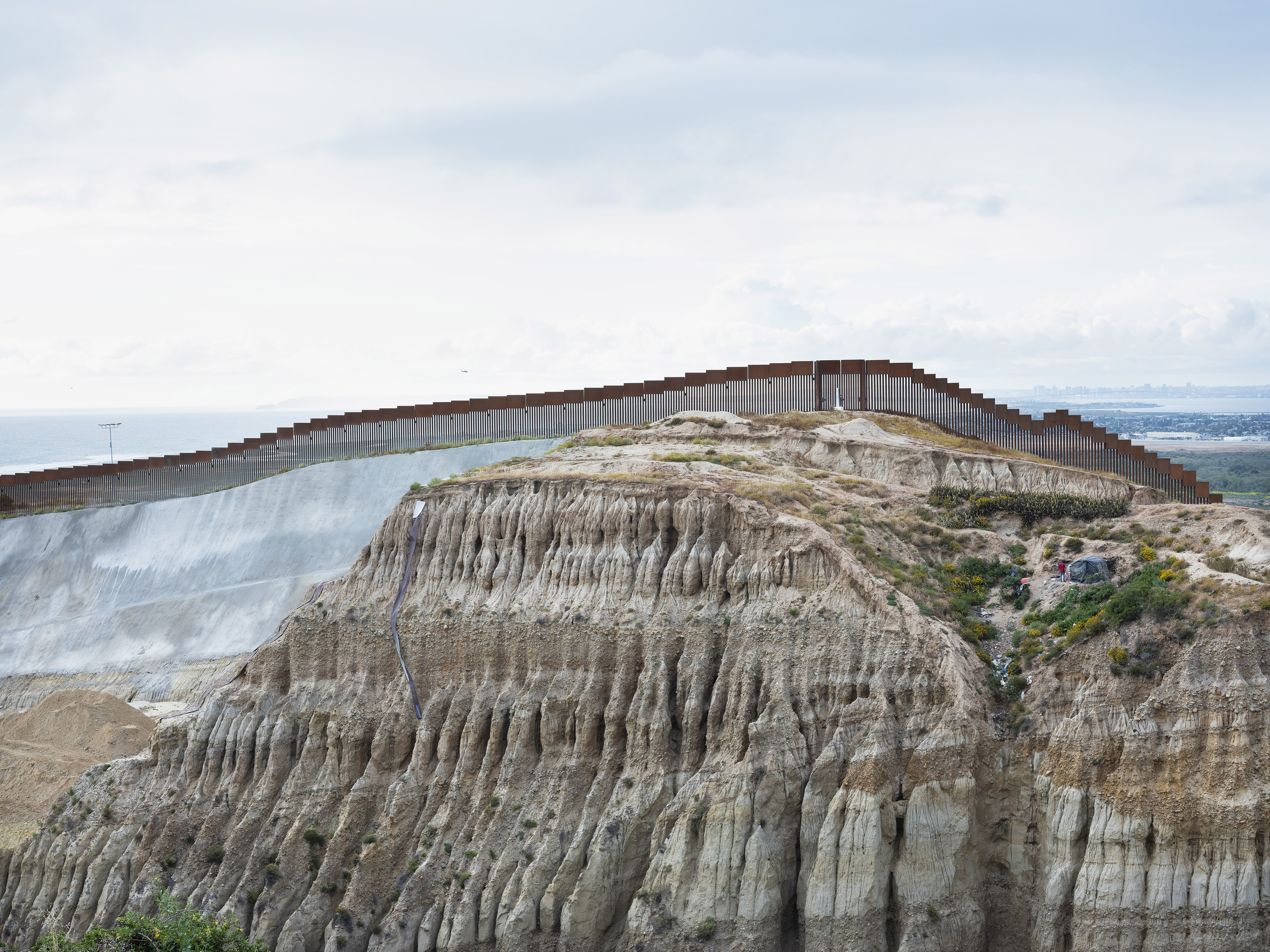Border walls don’t just serve to keep people out. For Magnum photographer Rafal Milach, they are powerful symbols of division and propaganda.
For nearly a decade, Milach has been working on a multi-disciplinary project examining the mechanisms of political control represented in architecture and other social structures. Refusal, which was shortlisted for the Deutsche Börse Photography Foundation Prize in 2018, centres on countries in the old Eastern Bloc; born and still based in Poland, Milach himself grew up behind the Iron Curtain.
Videos by VICE
His latest work, a GOST Books-published triptych titled I Am Warning You, highlights the universality of these practices beyond the former USSR. The new book comes in three parts: #13767 looks at the American-Mexican wall, I Am Warning You focuses on the Hungarian-Serbian-Croatian border, while Death Strip is an observation of the Berlin Wall, 30 years on.
“I felt it would be great to have a project which is not bound to this former East Bloc region, so people would be more aware that the problems I’m touching upon are not bound to certain geography,” Milach tells VICE. “I always thought that these border walls are the strongest symbols of geo-political division, propaganda, the migrant crisis… they’re the first thing you associate with this area.”
In the spring of 2018, Milach was invited by Magnum to work on a project at the wall that divides Mexico from the US. It was an opportunity, as he saw it, to investigate this specific, Trump-enabled period in modern history.
“Of course the fence, and later the wall, has been constructed for almost 30 years, and was already widely exploited by many artists and photographers,” he says, referring to the fence constructed between San Diego and Tijuana under Bill Clinton in the early 90s. “But I was interested in this very particular moment in time, when the narrative from the fence moved to the wall and intensified.”

While the photographer made two visits to the American site, his respective trips to Hungary and Germany were just ten days a piece, with the former following an assignment from the Goethe-Institut to commemorate the 30th anniversary of German reunification in 2019.
In each country, he was guided by what he found on the ground. In Hungary, Milach embarked across the landscape with a road trip. Built under Prime Minister Viktor Orbán against the backdrop of the European migrant crisis in 2015, what Milach found most surprising was the duty of surveilling the border. While military and local police assumed responsibility for patrolling the fence, the photographer also found civilians playing guard.
“In one village the inhabitants grouped in three-person patrols, trying to find migrants that could potentially cross the border. That was really creepy because it was a civic initiative – you could see how the propaganda works. The immigration wave was going through Hungary, it was never the ultimate destination, but still they decided to make it difficult,” he says, acknowledging Poland’s own poor history treating migrants.

“Meeting these guys, years after the traffic has stopped, it was a dark counterpoint to the experience I had travelling along the Hungarian fence elsewhere, where there was an incredible stillness and emptiness.”
In Berlin, Milach picked up a piece of the Berlin Wall at a flea market on the former “death strip”, a space between two sections of the wall where over a hundred people were killed.
“I was juggling with this idea of materiality and history and time, and where can I actually find this wall, or the representation of this wall,” he explains. “I soon realised big fractions have been dismantled and are now sold online.” The sections of the wall that remain standing, he suggests, are like a monument adopted by the city’s tourism industry to perform a new function.

While humanity is ultimately the core of Milach’s work, the project’s intended focus are the structures that dehumanise people and their personal experience. The book’s title underscores a broader intention for the work: I Am Warning You is an echo of the mechanical voice that meets would-be crossers at the Hungarian-Serbian-Croatian fence, but it also acts as a powerful declaration.
“The voice is generated by the system, but this message can be also reversed and posed by the society that is aware of this dark advocacy, of these control structures,” Milach says. “It can say ‘I am warning you, be aware that this is going on and maybe you can do something about it’.”
He adds that he isn’t naïve when it comes to the power of photography to challenge the status quo. “However, this is the weapon I have,” he argues, “and in coalition with organisations and activist actions, photography can be a persuasive tool. To build critical statements about the functionality of certain oppressive systems – this is as much as I can do.”



I Am Warning You is out in June from GOST Books.






